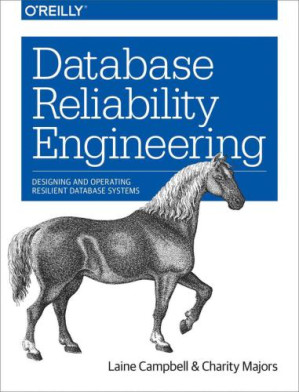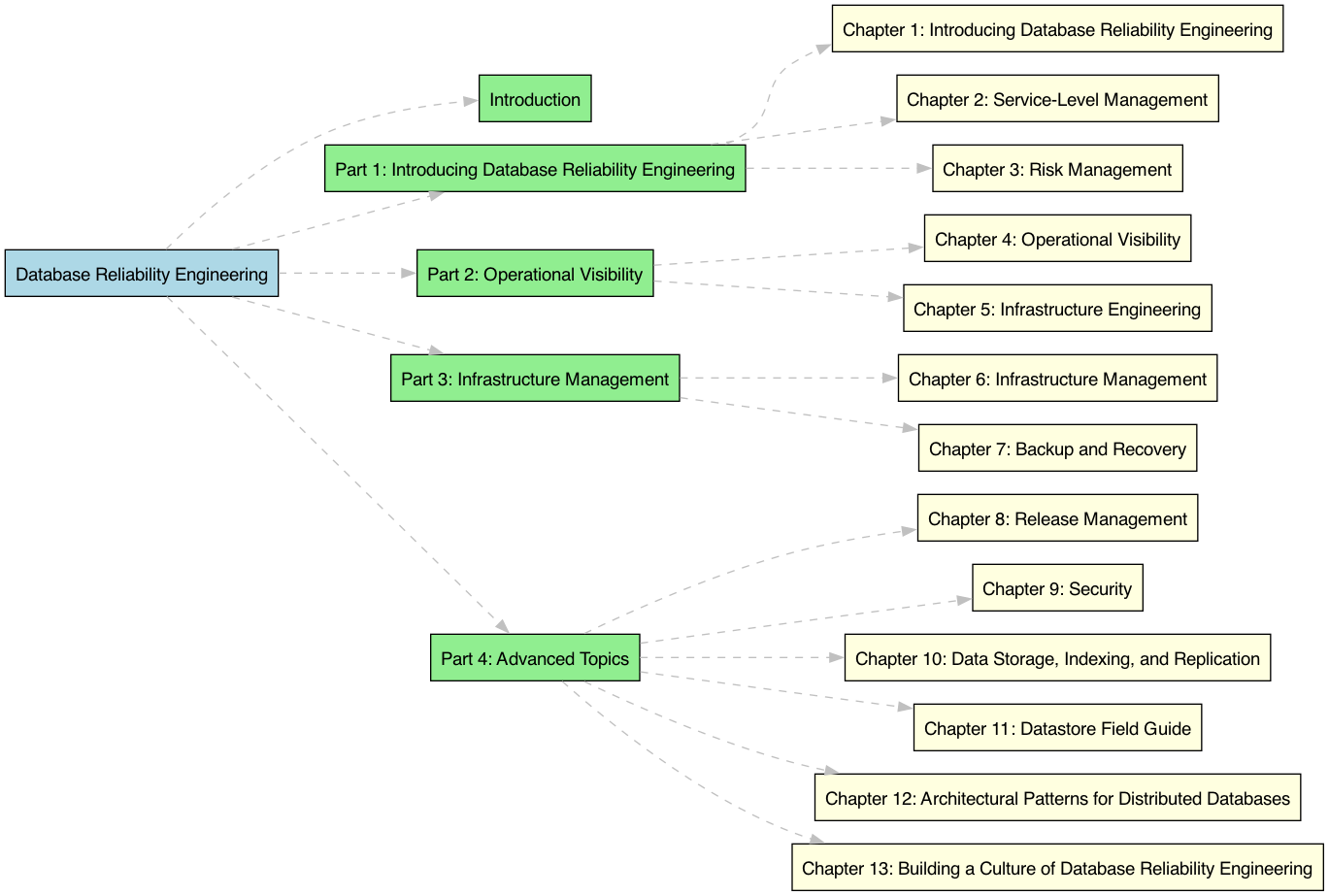Insights from Database Reliability Engineering: Designing and Operating Resilient Database Systems
Database Reliability Engineering by Laine Campbell and Charity Majors is a comprehensive guide on how to design, build, and manage resilient database systems. The book emphasises the importance of reliability in database operations and introduces the role of a Database Reliability Engineer (DBRE) who combines database expertise with software engineering principles to ensure robust data management.

Summary

Part 1: Introducing Database Reliability Engineering
Chapter 1: Introducing Database Reliability Engineering
This chapter sets the stage by defining the role of a Database Reliability Engineer and the need for reliability engineering in database management. It discusses the transition from traditional database administration to a more integrated and automated approach that aligns with DevOps principles.
Chapter 2: Service-Level Management
Service-level objectives (SLOs) and indicators (SLIs) are crucial for managing the performance and reliability of databases. This chapter explains how to define, monitor, and report on various service-level metrics such as latency, availability, throughput, and durability.
Chapter 3: Risk Management
Risk management is about identifying and mitigating potential issues that could affect database reliability. The chapter covers risk considerations, bootstrapping processes, service risk evaluation, architectural inventory, and prioritisation strategies.
Part 2: Operational Visibility
Chapter 4: Operational Visibility
Operational visibility involves monitoring and understanding the performance and health of database systems. This chapter introduces frameworks for telemetry, metrics, logs, and events, and discusses the importance of distributed tracing and internal database visibility.
Chapter 5: Infrastructure Engineering
The chapter delves into the various aspects of infrastructure engineering, including the use of physical servers, virtualisation, containers, and Database as a Service (DBaaS). It discusses the benefits and challenges of each approach and their implications for database reliability.
Part 3: Infrastructure Management
Chapter 6: Infrastructure Management
Effective infrastructure management requires robust configuration management, version control, orchestration, and compliance testing. This chapter outlines best practices for maintaining and enforcing infrastructure configurations and integrating them into development environments.
Chapter 7: Backup and Recovery
Backup and recovery are critical components of database reliability. This chapter explains different backup strategies, recovery scenarios, and the essential building blocks of a robust recovery strategy, including detection, tiered storage, varied tools, and thorough testing.
Part 4: Advanced Topics
Chapter 8: Release Management
Managing releases in a database environment involves creating safety nets to reduce risks and facilitate smooth deployments. This chapter discusses strategies for release management and how to balance innovation with reliability.
Chapter 9: Security
Data security is paramount for protecting sensitive information and ensuring compliance. This chapter covers strategies for planning and managing database security in evolving infrastructures.
Chapter 10: Data Storage, Indexing, and Replication
The chapter explores various data storage techniques, indexing methods, and replication topologies. It compares relational databases with other data storage models like sorted strings and log-structured merge trees.
Chapter 11: Datastore Field Guide
A comprehensive guide to evaluating and operating different datastores, this chapter highlights the conceptual and internal attributes essential for application developers and architects.
Chapter 12: Architectural Patterns for Distributed Databases
This chapter examines common architectural patterns used in distributed databases and the pipelines involved. It provides insights into the components and complexities of a database ecosystem.
Chapter 13: Building a Culture of Database Reliability Engineering
The final chapter discusses how to foster a culture of reliability within an organisation. It emphasises the transformation of the DBRE role from administrator to engineer and the importance of collaboration and continuous improvement.
Key Takeaways
- Transition to DBRE: Emphasises the evolution from traditional DBA roles to Database Reliability Engineers who integrate engineering principles.
- Service-Level Management: Highlights the importance of defining and monitoring SLOs and SLIs.
- Risk Management: Covers strategies for identifying and mitigating risks in database environments.
- Operational Visibility: Stresses the need for comprehensive monitoring and visibility into database operations.
- Infrastructure Engineering: Discusses various infrastructure options and their implications for database reliability.
- Backup and Recovery: Details the essential components of effective backup and recovery strategies.
- Security: Focuses on planning and managing database security.
- Data Storage and Replication: Explores different storage models and replication techniques.
- Building Reliability Culture: Encourages fostering a culture of reliability and continuous improvement in organisations.
Personal Reflections
Reading "Database Reliability Engineering" has been enlightening, particularly in understanding the shift towards more integrated and automated database management practices. The emphasis on collaboration, automation, and a proactive approach to reliability resonates deeply with the current trends in software engineering and DevOps.
Conclusion
"Database Reliability Engineering" by Laine Campbell and Charity Majors is an essential read for anyone involved in database management or DevOps. It provides a solid framework for building and maintaining resilient database systems and offers valuable insights into the evolving role of database professionals. By adopting the principles and practices outlined in the book, organizations can achieve greater reliability and efficiency in their database operations.